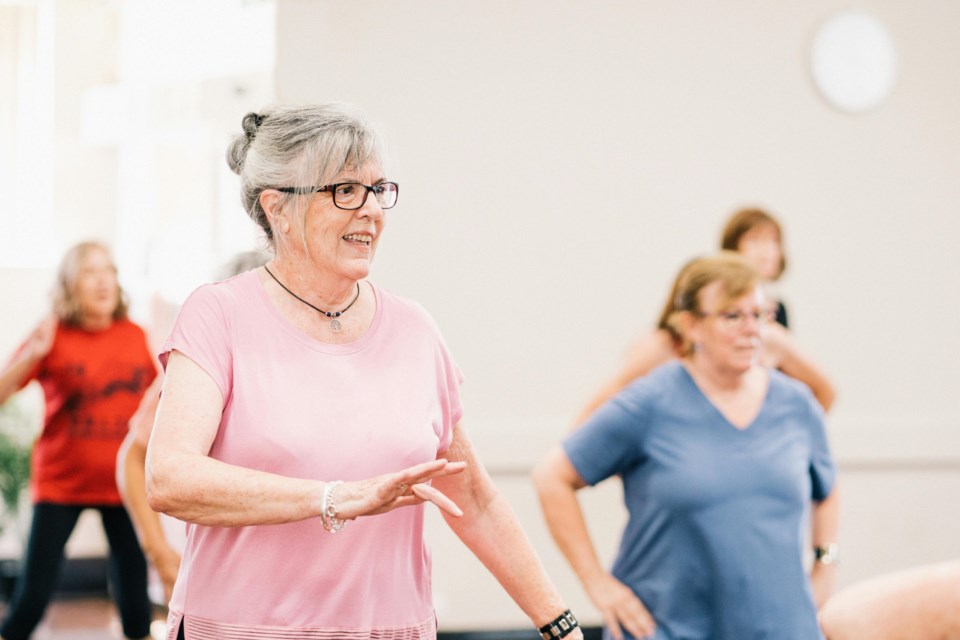A novel telerehabilitation program is remotely connecting rural seniors with medical specialists. Researchers behind the project say this virtual clinic-to-clinic model of care is the way forward for rural health, and participants say they are already seeing the benefits.
Before Maggie Barrie moved to the Pine Valley seniors lodge in Hinton, she says she had become increasingly inactive around the house. Not only was it harder to look after the yard, she was starting to feel the consequences of that inactivity in an aching back, trouble sleeping, and reduced mobility.
Barrie admits she was initially reluctant to join in the standing balance exercise program at the lodge. But having tried it, she’s committed. And at 87 years old, many of the health problems that slowed her down in the past are improving.
“It's just amazing, the balance that I have received, how easy it is to walk, not being afraid to fall,” she said.
The standing balance initiative is one of three programs that have been offered through a partnership between the University of Alberta’s rehabilitation medicine department and The Evergreens Foundation, which runs Pine Valley as well as lodges in Jasper, Edson, and Grande Cache. Using specialized equipment, like telepresence robots that allow specialists to remotely assess patients, physiotherapists can guide lodge residents through exercise routines, eliminating prohibitive cost and travel considerations that would otherwise accompany treatment.
Martin Ferguson-Pell, a professor in the U of A’s Faculty of Rehabilitation Medicine, has spent years developing applications for telerehabilitation using the clinic-to-clinic model, with a focus on expanding access in rural areas. Getting the technology into continuing care settings quickly proved to be a good fit.
“We've had some significant success in deploying this with a continuing care environment in rural Alberta with The Evergreens Foundation,” said Ferguson-Pell.
“This really helps people who are in supported living, and it's not easy for them to travel or for them to be able to get the help of their family members to go to appointments as far away as Edmonton and Calgary.”
The team at U of A has previously demonstrated the usefulness of their virtual care approach for assessment of vertigo, long-COVID symptoms, and shoulder injuries. But the evolution from prototypes, to trials, to being a common tool in rural health care is a slow process.
“I'm confident this is the way forward,” Ferguson-Pell said. “And what we really need is to get some momentum so that we can get experience in finding the strengths and weaknesses of various solutions. And the only way we can find those is deploying them in the real world, working with rural communities.”
Rylee Waugh, the health and wellness manager at Evergreens, said there has been an enthusiastic response from residents, and there are about 45 active participants in the four locations that run telerehabilitation sessions.
Though Waugh has a qualified background in fitness and health promotion, she says being able to coordinate with specialists remotely adds a dimension to the program that goes beyond what in-house staff could deliver.
“It brings more opportunity to our seniors at the lodge, because I'm not a physiotherapist. We can connect and still bring these incredible wellness services to our residents. That's something I would never have been able to do on my own,” Waugh said.
Ferguson-Pell said they have been working on a program over the past year for people who experience urinary incontinence because of pelvic floor weakness. As with the previous rehab and standing balance projects, the pelvic floor exercise program has been well received by lodge residents.
“It totally cured me of any incontinence without having to take pills or whatever else they try to push on to you,” Barrie said.
The leg and core strength gained through the standing balance program also prepared her for the difficult exercises she is now engaged with, Barrie said.
“Because it is a lot more work, but so rewarding.”



